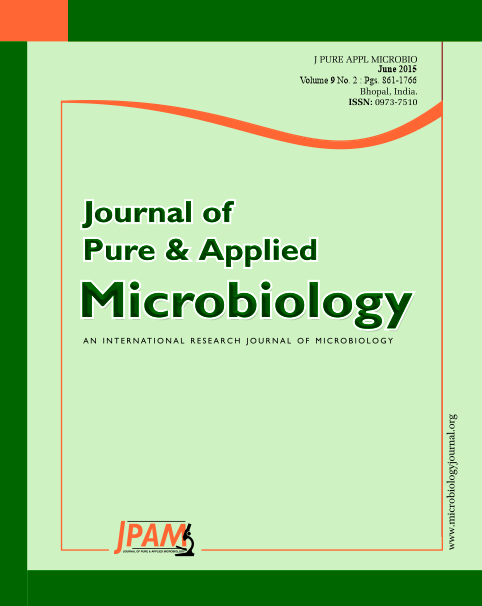Pseudomonas putida LUA15.1 producing laccase was isolated from rice rhizospheric soil samples of paddy field of Una district, Himachal Pradesh (India). The objective of this study was to optimize its culture conditions using a statistical analysis of its laccase production. The interactions between different cultural and nutritional parameters for laccase production were characterized using a Plackett-Burman design and the response surface methodology. The different cultural and nutritional parameters were initially optimized using the conventional one-factor-at-a-time method and a Plackett-Burman experiment was then performed to evaluate the effects on laccase production. Incubation temperature, time, pH, tween-20 and CuSO4 were found to have a significant influence on laccase production, and the optimal concentrations of these five factors were then sequentially investigated using response surface methodology with a central composite design. The resulting optimal medium components for laccase production were: Incubation temperature 28 °C, time 24 hrs, pH 7.0, tryptone 0.5%, yeast 0.3%, CuSO4 50mg/l, CaCl2 10 ml/l, tween-20 0.2 ml% and Guaiacol 5 mM. Using these optimized conditions, the yield of laccase was increased 5.52 times to 58 U/l as compared with laccase production with an unoptimized conditions. This is the first report on the statistical optimization of laccase production by Pseudomonas putida LUA15.1.
Pseudomonas putida, optimization, laccase production, Plackett-Burman design, response surface methodology
© The Author(s) 2015. Open Access. This article is distributed under the terms of the Creative Commons Attribution 4.0 International License which permits unrestricted use, sharing, distribution, and reproduction in any medium, provided you give appropriate credit to the original author(s) and the source, provide a link to the Creative Commons license, and indicate if changes were made.


